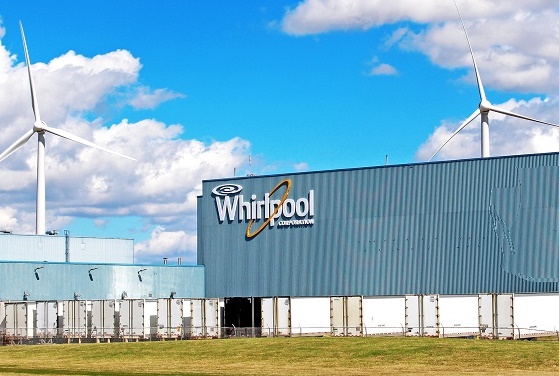American companies are increasingly making their own power – and sales – with wind turbines located near the factories and buildings that consume the power they make, says a recent report from the U.S. Department of Energy (DOE).
According to the DOE’s Pacific Northwest National Laboratory (PNNL), the 2015 Distributed Wind Market Report offers the fourth annual analysis of distributed wind power (generating wind power near where it will be used, instead of purchasing power from large, centralized wind farms).
“Wind plays a key role in the rising area of distributed energy,” says report co-author Alice Orrell, an energy analyst at the PNNL.
Co-author Nik Foster, PNNL energy analyst, adds, “Although distributed wind is not as widespread as distributed solar, new third-party financing options similar to the lease model that spurred growth in the residential solar market could also grow distributed wind.”
The reports find that 37% of the new distributed wind capacity added in 2015 was for industrial uses, including factories, processing plants and operation facilities. Companies using distributed wind include the Whirlpool and Ball corporations in Ohio, soap manufacturer Method in Illinois and Stafford County Flour Mills in Kansas.
Exports of U.S.-made small wind turbines, which generate up to 100 kW, doubled from 2014 to 2015 – adding 21.5 MW of capacity in 2015, says the report, which adds that small wind exports accounted for more than $310 million in combined sales between 2012 and 2015. In addition, Italy, the U.K. and Japan are among the largest importers of U.S.-made small wind turbines.
In 2015, 28 MW of new U.S. distributed wind power capacity was added through the installation of 1,713 turbines. According to the report, this brings the U.S. to a total of 934 MW of distributed wind capacity and 75,000 turbines installed since 2003 – or about 1% of all U.S. wind energy capacity installed since then.
Ohio, Nebraska and Connecticut led the U.S. in new distributed wind power capacity in 2015 – respectively adding 7.7, 7 and 5 MW (due to a large project in each of those states), the report says.
The estimated cost of energy made from a sample of small distributed wind turbines was $0.11/kWh in 2015, compared to overall residential electric rates that run between about $0.09 and $0.21 in the continental U.S., according to the report.
In addition, adds the report, annual distributed wind capacity additions have declined since 2012, when federal stimulus funding spurred renewable energy’s expansion.
More information can be found in the full report.
Photo courtesy of Lauren Powell/One Energy via PNNL




